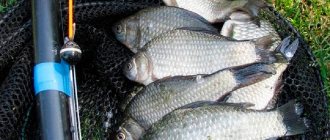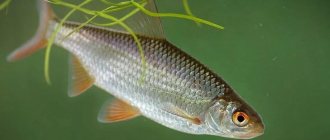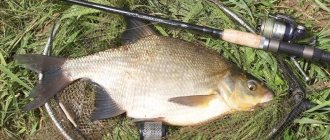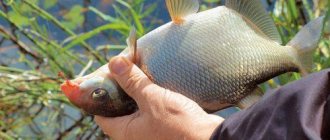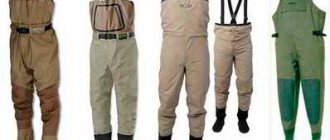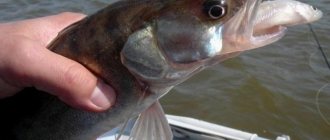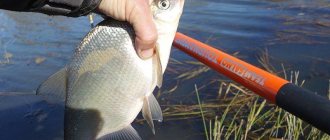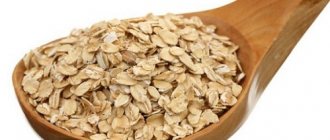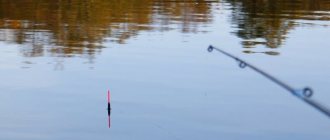Rod selection
The float fishing rod currently has 4 varieties - fly rod, match rod, Bolognese rod, and plug rod. Each of them has its pros and cons and is successfully used to catch bream in certain conditions.
Fly fishing rod
It is a telescopic rod without guide rings and a reel. All equipment is attached to the thin and sensitive tip using a special connector.
It is used most often when fishing from the shore in still water or slow currents.
Advantages:
Lightness of gear - when fishing with a fly rod, you can use fairly long rods, and their weight will be significantly less compared to analogues of other varieties.
The use of thin and strong fishing lines and sensitive equipment - when fishing on the fly, the fishing line does not pass through a series of guide rings, gradually wearing out from friction against their surface. In addition, when float fishing with the same Bolognese or match fishing rod, thin fishing lines are very damaged when repeatedly winding the reel onto the drum, which, due to the absence of such in the fly tackle, does not happen. Based on this, the swing allows you to fish with thin fishing lines with a cross-section of 0.12 mm, while equipping the fishing rod with a very sensitive float with low load and a small hook.
Quick change of equipment - fly gear allows you to very quickly change one equipment for another pre-prepared and wound on a reel.
Reasonable price - due to the absence of rings and a reel seat, such rods have a lower price than other varieties.
Flaws:
It unfolds and folds somewhat slower - winding the equipment from the reel when unfolding the fishing rod and winding it back when folding is much slower than in versions with a reel.
It is mandatory to use a landing net when float fishing for large fish - blind rigging does not make it possible, as in the case of Bolognese or match, to shorten the line by winding the reel when landing large fish, which dictates the need to use a landing net.
Match tackle
Match rods are durable plug-in rods, consisting of 3 elbows, with frequently spaced guide rings and a comfortable cork handle. This rod is equipped with a special high-speed spinning reel that has a shallow depth - this allows you to wind thin fishing line on it, filling the spool completely, which makes it easy to pull off when casting. This gear is used for fishing over long distances, both in still water and in weak currents.
Advantages:
- The ability to make long casts to places remote from the shore.
- Thanks to the rigid and durable rod with frequently spaced guides, it allows you to catch large fish.
Flaws:
Match fishing rods are quite expensive.
This type of tackle is not suitable for fishing on small rivers and small ponds, being inferior in lightness and sensitivity to a more compact and lightweight fly rod.
Bologna rod
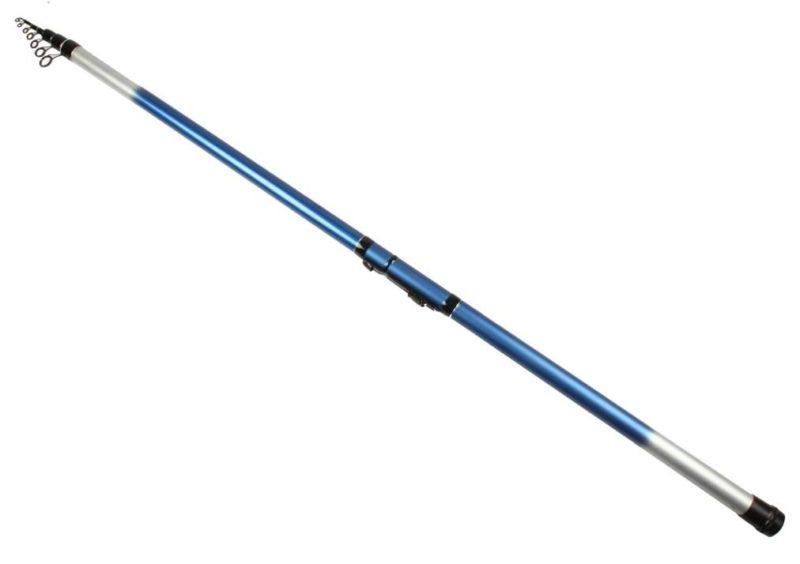
The Bologna float fishing rod is the most common telescopic fishing rod with guide rings. Reels for such tackle can be installed both cheaply with a small drum and a simple stopper, and more reliable small inertia-free ones. This type of gear is used everywhere – it is used for fishing both on rivers and on lakes and reservoirs.
Advantages:
- Versatility - thanks to a fairly light rod and running equipment (the presence of guide rings and a reel), such tackle can be used when fishing with a float, both in still water and in the current during the retrieve.
- The ability to make fairly long casts when using heavy equipment.
- Quick disassembly and assembly of the tackle - when unrolling, a large amount of fishing line comes off the reel and the rod unclamps very quickly. When assembling the fishing line, the rod folds just as quickly, and the fishing line is quickly wound up with a reel.
Flaws:
- Compared to a light fly rod, a Bolognese fishing rod weighs more due to the presence of reel guide rings, which can tire the angler’s hand when fishing with a fly line.
- The reel and rings create additional load on the fishing line , which does not allow the use of thin monofilament fishing lines when fishing with a Bolognese fishing rod
Plug tackle

Plug tackle is a fishing rod consisting of a main part and end caps (whales) attached to it. The knees of the main rod are connected to each other in such a way that each subsequent knee fits onto the previous one; The lower part of the end cap also fits onto the last knee of the main form, while the larger part of the end cap has a more familiar telescopic connection of the knees.
The length of any individual plug rod, unlike Bolognese, fly and match rods, can increase with the number of ends and vary from 12 to 20 meters. All equipment of short length is fastened to the tip, as in the fly tackle. Plug tackle is used when fishing with a float, both in the current and in still water at distances determined by the total length of the assembled rod.
Advantages:
- The ability to fish promising places remote from the shore , measure the depth in them and, using a portable feeder, accurately feed this place.
- Using thin lines and light rigs.
- High sensitivity of the tackle - the equipment in the plug rod is short, thanks to this, a small piece of fishing line located on the surface sails weakly, without contact with water, and does not cling to aquatic vegetation
Flaws:
- The high cost of the gear and its low prevalence - plug rods are more expensive than all other types of float rods, and besides, you can’t find such gear in any fishing store.
- The need for a large number of devices - sliding racks, holders for limit switches, inconvenience in transporting them in the absence of a car
- Large weight – the mass of the assembled plug is quite sensitive.
- The fragility of the main rod and end rods - strong and flexible rods are often damaged by pinpoint impacts on branches or trunks of coastal trees.
- Inconveniences during transportation and fishing - long plug rods are very large and take up a lot of space when transporting them; When fishing with a float, very often this or that place turns out to be unsuitable due to the lack of space sufficient for maneuvering the rod.
Coil selection
For match and Bolognese float fishing rods, reliable and easy-to-use spinning reels are used. Among the huge variety of models of spinning reels, there are several that have a good reputation:
Shimano Rarenium 3000
Shimano Rarenium 3000.
A lightweight high-speed reel with a small-profile spool with a wear-resistant coating capable of holding up to 120-140 meters of thin fishing line with a cross-section of 0.27-0.25, a durable body made of composite material, 7 bearings making its rotation easy and silent. This model is one of the best for match gear
Mitchell EXX-S 4000.
A very high-speed reel (gear ratio 7.2:1) with a durable body and a spool capable of holding up to 150 meters of thin fishing line with a cross-section of 0.25 mm, equipped with 5 reliable ball bearings. Suitable for both match and Bolognese fishing.
Browning Xitan Master Match 930FD.
A high-speed reel with a capacious spool (up to 150 monofilaments with a cross-section of 0.18 mm) is capable of reeling out 110 cm of fishing line in one turn of the handle, equipped with a reliable carbon clutch, 9 ball bearings in the spool rotation mechanism and 1 in the line guide. The reel comes with two types of handles - double and single.
Peculiarities of catching bream in summer: June, July, August
When going fishing for bream in the summer, you need to know the habits of this fish in order to choose a place. Bream is a schooling fish and moves to its constant feeding areas. It is found in rivers with weak currents and in large lakes or ponds with a sandy, clayey or small stone bottom.
This fish loves holes with a sloping slope, or better yet steps, where it lives somewhere in the middle, because catfish live in the very depths of the hole, and it is not safe for bream to meet a catfish. The most accurate way to determine such a place is to use an echo sounder; at the same time, it will show the presence of fish.
If you do not have this device, you can measure the bottom of the boat using a cord with a sinker and stake out a place with a plastic bottle on the fishing line, and at the same time pre-feed this place with bait so that the fish remains in this place.
If this is not possible, then the place must be determined by external signs. For example, on canals it is known for sure that there is a hole in the middle, and the edge is 20 meters from the shore, which means you need to catch bream at 25-30 meters.
On rivers, if a spit protrudes into the river from one bank, it means there is a hole on the other. At dawn, bream sometimes floats to the surface showing its back and then, with a blow of its tail, goes into the depths or blows bubbles.
Equipment
In rigging for bream, each element, from line to hook, is of great importance. Properly assembled equipment is half the key to success when catching bream on a float.
Float selection
- Floats for crucian carp
When fishing with a fly rod and a plug rod, it is best to use light drop-shaped floats with a thin and long antenna with a weight of 0.5-1 grams. - For the Bolognese fishing rod, spindle-shaped floats with a long antenna float and a weight of 2 to 3.5-4 grams are suitable.
- For match gear, a variety of floats specially designed for it are used with a massive body, a length and an antenna clearly visible from a long distance, and its own weight attached to the bottom of the float body.
Loading
The load of floats when fishing for bream with a float rod varies depending on which of the varieties described above will be used.
Fly fishing rod
To load the small and sensitive floats of the fly tackle, small pellets are used, carefully attached to the fishing line. At the same time, the load is secured and divided into 3 parts:
- Podpodak - several small pellets weighing 0.1-0.3 grams located near the attachment of the leash to the main fishing line.
- Intermediate weight - a weight consisting of one pellet located at a distance of 15 cm from the under-grazing.
- The main weight - about 60% of the load required to load the float, is located 20-25 cm above the intermediate weight.
Match
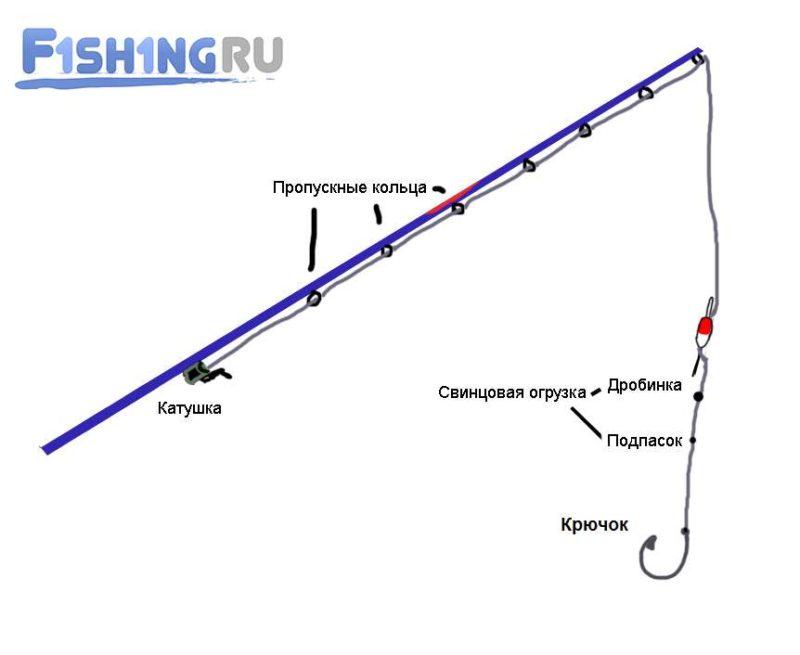
- The main sinker is an olive, the weight of which is selected taking into account the fact that match floats have their own weight built into the body. It is located at a distance equal to the length of the float multiplied by 1.5.
- A sub-shot is a pellet weighing 0.2 grams, located at the junction of the main line and the leash.
Bologna
- Podpodok - small pellets weighing 0.2 grams are placed near the loop for attaching the leash to the main fishing line.
- The intermediate part is several pellets of larger diameter located 20 cm above the under-grazing.
- The main load - 60% of the weight required for loading the float is located 20-25 cm above the intermediate load.
Plug
When fishing with a plug, light, sensitive floats are used. The load pattern for a plug fishing rod is generally similar to that of a fly fishing rod and consists of a main weight, a sub-weight and an intermediate one, which in the case of a plug is usually separated into several parts in order to increase the sensitivity of the tackle when fishing over long distances.
Hook selection
When fishing for bream, hooks are selected according to size, taking into account factors such as:
Weight of the expected fish to be caught - for catching bream and small bream weighing up to 1-1.5 kg, hooks No. 8-10 are used; When catching larger fish, use hooks No. 6-4.
Type of bait used for fishing - long shank hooks No. 10-6 are suitable for worms; when fishing with maggots - No. 10-14; small bloodworms – No. 14-16; when using vegetable baits (corn, dough, porridge), depending on the size of the bait, hooks from small No. 14 to larger No. 8 are used.
Of the hook manufacturers, the following brands are the most popular among bream fishermen:
- Owner
- Gamakatsu
- Drennan
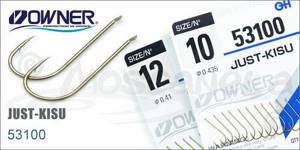
Owner
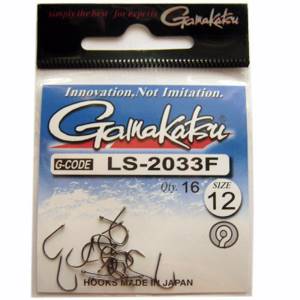
Gamakatsu (Japan) Drennan
Features of the gear device
Float tackle when fishing for bream should be:
- Light;
- Sensitive;
- Unnoticeable;
- Durable;
- Adapted to certain fishing conditions.
Tackle
When fishing for bream in summer, it is better to use fairly stiff rods with a soft upper shock absorber. If you plan to catch heavy specimens of bream (more than 2 kg), then you need a slow-action rod that is flexible along its entire length. The rod must have a length of at least 5 meters, and it is equipped with a spinning reel.

The line should be chosen thin, 0.25-0.4 mm in size, and the leash should be 0.01 mm thinner than the main line. Small hooks No. 3-4 are used for catching bream. It is advisable to install floats with an elongated keel, drop-shaped, on the fishing line, since they have minimal buoyancy and are able to signal a careful bite.
Nozzles
Bream is a fish with very wide taste preferences. They catch it both with plant baits and all kinds of bait.
Vegetable origin

- Dough - prepared from loaf crumb, flour and eggs.
- Mastyrka is a porridge made from boiled peas and semolina; This attachment is universal not only for bream but also for all carp fish in freshwater bodies.
- Canned Corn – This attachment is easily available at any grocery store. It stays very firmly on the hook, attracting bream not only with its smell, but also with its golden color.
- Undercooked potatoes - the tubers are boiled to such an extent that they do not fall apart and can be cut into cubes, which are then placed on a hook.
Animal origin
- Worm - used as bait for large dung crawls.
- Bloodworm is the larva of the squeaking mosquito, used when catching bream on a float in early spring. Place bloodworms on small thin hooks, 2-3 pieces each.
- Maggot is the larva of a blowfly; maggots are baited across the body, 3-4 maggots per hook.
- Pearl barley meat is most often used when catching bream on rivers; the softest and most tender part is used in the shell.
Make your own nozzle
In addition to homogeneous baits, bream are often caught using homemade or purchased boilies.
Homemade boilies are prepared using the following technology:
- Grind 100 grams of sunflower seeds in a coffee grinder to a powder.
- Add 30-40 grams of egg powder, 10-15 grams of sugar and wheat flour to the resulting mass.
- Mix the mixture thoroughly.
- Add water to the resulting dry homogeneous powder and knead until it becomes a thick dough.
- Let the dough sit and thicken.
- Roll into balls, boil them in lightly salted water, and dry.
- Place the finished boilies in a plastic bag with sunflower cake and place in the refrigerator for 2-3 days.
Choosing a place and time to catch bream using float tackle
The most suitable places for catching bream are reservoirs and rivers with clean, hard soil or coarse sand. The fish likes to swim at a depth of at least three meters.
Bream spawn in late spring and summer, so it is preferable to catch prey after cold weather. If fishing takes place in reservoirs, then you should expect that the fish will hide in the holes. When the depth is shallow, vertebrates hide in ditches.
Catching bream in early spring with a float rod should be done competently and thoughtfully. After cold weather, the fish begin to “eat”, so catching the largest specimens is more likely. It is important to choose the right bait and feed the prey.
Catching bream in April with a float rod is stable. This phenomenon is associated with the approach of spawning, so the fish gradually approach the shore. The prey loves to bask in warm water, and at the slightest cold snap it floats to the bottom (this factor should be taken into account when choosing equipment). It is very important not to forget about preparing the right complementary foods. Preference should be given to mixtures made from peas, pearl barley, oatmeal with the addition of flavorings.
Lure
When fishing for bream, bait plays a huge role - it attracts cautious and often well-fed fish to the bait. Bait mixture can be bought at a fishing store, but many fishermen prefer homemade bait prepared according to their own proven recipes over commercial bait.
Purchased
Among the store-bought baits, the following mixtures have proven themselves well when catching bream:
Trapper “Leszcz” is a fairly effective and at the same time cheap bream bait used for catching bream and large bream in reservoirs with standing water, as well as in rivers with medium and fast currents.
Sensas 3000 Bremes is a specialized bait for catching bream. It is used in any conditions, both in mixture with other baits and with the addition of clay or sand.
Dunaev BREAM LAKE and Dunaev BREAM RIVER are well-known Russian baits used respectively for catching lake and river bream.
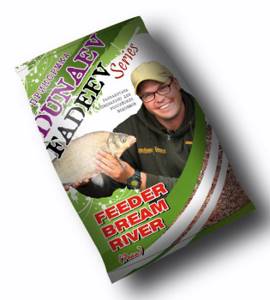
Dunaev BREAM RIVER
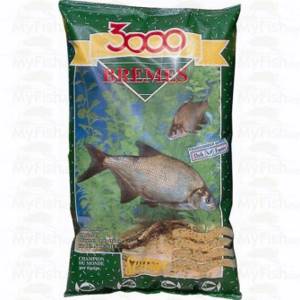
Sensas 3000 Bremes

Trapper "Leszcz"
Homemade
Making bait with your own hands is not difficult. Difficulties may arise only when finding some ingredients.
Recipe for fishing in cold water
- Breadcrumbs - 1 part.
- Makukha - 1 part.
- Unsalted fresh lard, cut into 5x5 mm cubes - 0.5 parts.
- Bran - 1 part.
- Boiled pearl barley – 1 part.
- Finely chopped worm or bloodworm - 0.5 parts
- Finely ground coriander - 5 grams.
- Finely sifted soil.
Recipe for bait in warm water
- Breadcrumbs – 1 part.
- Well-roasted sunflower seeds – 0.7 parts.
- Bran - 1 part.
- Millet porridge – 1 part.
- Coriander seeds – 1.5 grams (autumn and spring).
- Vanillin – 2 grams.
Groundbaits and bait for bream
Next, you have to attract the bream to the chosen place and try to keep it throughout the entire fishing. The main thing in this matter is not to overdo it and not to overfeed the fish, otherwise there will be no luck. The most suitable ingredients for feeding bream in summer are considered to be millet, corn, breadcrumbs, sunflower cake, and milk powder. Flavorings added to the bait (vanillin, cinnamon, anise oil) attract fish well. You can deliver the bait to the fishing site in a mesh feeder with small cells of 0.5-1 cm using a nylon cord or fishing line. You can do it much simpler: make balls weighing 150-250 grams from the bait and send them into the water. If after several successful bites the bite stops, you should add bait again.
We also recommend reading:
Catching bream with a ring: technique, feeder and tackle with your own hands Bait for winter bream: preparation, application features Winter fishing for bream with a small pull Winter fishing for bream with a float
Choosing a fishing spot
On the river, bream prefers deep-water areas with a slow current near steep banks, reaches with a clayey or sandy-silty hard bottom.
Fishing on the current
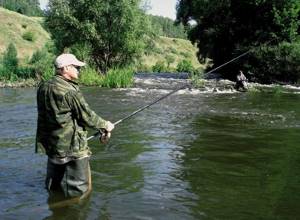
When catching bream in the current, it is most often caught from a boat. With this method of fishing, short side rods or a small Bologna 4 meters long with a reliable spinning reel are used. After the boat is anchored in a promising place, a capacious feeder with pre-prepared bait is lowered into the water to attract fish. They fish by retrieving along the stern path formed downstream from the boat. In the summer, pearl barley meat, peas, and canned corn are used as bait; in the spring and autumn, worms, maggots, and bunches of bloodworms are used.
Shore fishing in the current is carried out using long Bolognese or plug gear. The bait is placed in a fine mesh net and thrown from the fishing spot upstream. The baits used are the same as for boat fishing with a float.
Fishing in still water
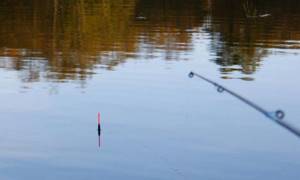
In still water, catching bream using float gear from the shore is more productive than on the current. Bream are caught at night from bridges, in shallow places near reeds, using luminous attachments on floats and mandatory illumination with a flashlight; at sunset and dawn and during the day, fishing from a boat is more productive. Among the varieties of float fishing rods, when catching bream, light fly and Bolognese fishing rods, as well as long-range matches and plugs are used.
As in the current, a mandatory technique when fishing with a float in still water is the use of bait. But unlike the river, the bait is rolled into clay balls and 3-4 balls are thrown into the fishing spot.
Among the baits used for lake bream fishing on a float in the summer, peas, mastyrka, worms, and canned corn prevail. In spring and autumn, bream are more willing to take on worms, bloodworms, and maggots
Bait for bream
In summer, if you count the full daylight hours, the bait will take an average of 3 kg. Plus or minus 1 kilogram. When you arrive at the pond, immediately knead it so that it can sit longer and swell. Naturally, it is better to mix in the water in which you are going to fish. It is advisable to add to the bait the bait you are going to fish with. This is either maggots, or bloodworms, or add chopped worms.
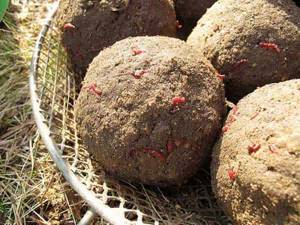
Initially, throw up to 10 balls, and then several balls depending on the intensity of the bite. You can add flavor activators with the taste of coconut, cinnamon, etc. to factory baits. I would also like to note that many anglers perfectly prepare bait for bream at home; in their opinion, it works much better on fish than store-bought ones! Here are some recipes for do-it-yourself bait for bream. No tail, no scales.
Time to bite
Bream prefers to actively feed at night - at this time, schools leave the depths and go to muddy shallows with rich aquatic vegetation.
At dawn, bream leaves the shallows and moves to the dumps; when the sun rises high, the water begins to warm up, schools of bream return back to the depth where they remain passive until sunset, when a new migration to the feeding place begins. Such movements are typical for sunny and hot days. In cloudy weather, bream can go out to feed in the middle of the day, and in windy weather, bream is often caught near the surf shore, where the fish come to feed on living creatures washed out of the ground by a strong wave. In autumn, when the water temperature drops, this cyclic schedule is disrupted and bream almost all the time stands and feeds at great depths.
Fishing in spring
March
In March, bream is caught from the ice using a jig and a winter float rod in the morning, 1-2 hours after sunrise.
Night fishing for bream in pits and on riverbed edges using float winter fishing rods is productive - fish take from midnight until 4 am. The main attachment at this time is the bloodworm. Feeding when fishing for bream at this time is mandatory.
April
In April, bream are caught on the edges of adjacent holes bordering extensive shallows.
The best tackle for catching bream on a float at this time is a match or plug tackle. Bream is caught in April using a worm, maggot, less actively, but it still takes bloodworms. They feed the fishing spots in small portions. The bait must contain chopped worms and bloodworms. Flavorings are used in small quantities due to the low water temperature.
May
In May, bream leaves for spring spawning in shallow floods, backwaters and old areas with flooded thickets of aquatic vegetation. Medium-sized individuals spawn first, then large breams and last - small breams.
Bream is caught at this time near spawning grounds in old fish and backwaters on shallows remote from the shore and extending into the depths with thickets of aquatic vegetation; at the mouths of rivers flowing into lakes, at reservoir dams. The best tackle in May are match and plug float rods. Among the baits, along with bloodworms, worms and maggots, bream begins to actively peck on mastyrka, canned corn, steamed pearl barley, and peas. Bait is a must; as the water temperature increases, you can add more flavorings and components of plant origin - bran, cake, finely ground sunflower seeds
Fishing in summer
June
In the post-spawning period, bream most often feeds for some time near the spawning grounds, and then rolls down to their summer camps - holes, riverbed ledges. In June, bream switches to its usual cyclical feeding, in which it spends most of the day at depth, and comes out to feed only at dusk. first on the edges of the pits, and then at nightfall on the shallows. On cloudy days, fish can come out to the shallows during the day. In June they catch bream not only with a plug and match rod, but also with a fly rod and a Bolognese rod.
They feed promising areas in small portions. The content of flavorings in the bait is increased, the content of ingredients of animal origin is reduced
The main baits at this time are mastyrka, steamed pearl barley, and undercooked new potatoes. On the rivers, bream takes well for pearl barley meat and dung worms.
July
In the hottest month of summer, bream becomes lethargic and inactive, stands in deep holes most of the day, and begins to come out to feed in the evening when the heat subsides.
The best bite in July occurs in the early morning, until the sun begins to heat the water that has cooled overnight. Bream is caught best in the morning near holes, in shallow waters; the evening and night bite is somewhat worse
The main baits are mastyrka, peas, canned corn, a sandwich of bloodworms and maggots. Groundbait is a standard mixture for warm water, consisting of plant ingredients.
August
In August, bream begins to feed heavily at night. The most promising places for night and morning fishing are the upper edges of the holes, bays with a depth of 2-3 meters with reed thickets and water lilies. Among the gear, the same variety remains - all types of float fishing rods are applicable.
Baiting tips: canned corn, pearl barley, peas. During this month, bream begins to fish more readily for worms, maggots, and barley meat.
Be sure to use bait.
Fishing in autumn
September
In September, bream begin to gather in large schools and actively feed, preparing for the winter. It is caught in the first autumn month in its feeding areas - on the upper edges of holes, grassy shallows.
Bream feeds at this time much longer than in summer - the morning bite usually lasts until noon. Among the baits, worms, maggots, and bloodworms begin to prevail.
They begin to use ingredients of animal origin in the bait, and as the water temperature drops, the content of flavors is reduced.
October
In mid-autumn, bream prefers to occupy areas of medium depth in schools, well warmed by the sun. When it gets colder, flocks immediately go to wintering pits, where they remain until freeze-up. Bream is caught in October close to the upper edges of the holes, in the above-described areas with medium depths. At this time, night bream fishing is most productive.
The main baits are worm, maggot, bloodworm.
November
In the last autumn month, the bream moves to deep wintering holes, where it stays until the onset of a steady cooling of the water. At this time, bream feeds near holes, at great depths, and does not go to the shallows.
Feeding time is from 10 am to 1 pm. It is caught exclusively with worms, maggots and bloodworms. Among the float tackles best suited for catching bream in November are match and plug fishing rods.
Fishing rod equipment
For float fishing, a medium-length winter fishing rod with a comfortable handle is suitable. It is better to take a hard whip, about 15 cm long. The choice of reel or reel on a fishing rod is up to the fisherman; there is no fundamental difference here.
fishing line
In winter, bream is caught on a float rod at great depths. Therefore, there is no point in worrying about the transparency of the fishing line; it is even better to use dark colors. The fish will not be able to see the shade, but for an angler in the snow such a fishing line will become somewhat more noticeable. Consequently, the convenience and speed of working with the tackle will increase.
Sports fishing line diameters (0.06-0.08) are not needed here, because the leash with the hook will lie on the bottom, and the bream is more trusting of a recumbent rig. Perhaps this is due to the structure of his mouth (accordion) with which he is more accustomed to “vacuuming” food from the ground.
A suitable diameter would be 0.14-0.16mm. Especially if there are no snags at the bottom, and the likelihood of biting a bream weighing more than two kilograms is low. A line of this diameter gets tangled much less and allows you to quickly lift fish from great depths. It is known that large bream are shy; a fish floundering for a long time can alert and scare away the entire school.
Hooks
Hooks should be made of thin wire, with sufficient bending strength and a small barb. It is better to leave large and medium sizes until summer. Small models of hooks with a spatula sometimes damage relatively thick fishing line. Therefore, I believe that hooks with a ring on the shank are more suitable for these conditions.
On the part of the hook, over the knot, I recommend placing a pre-prepared piece of red cambric. The cambric cannot be called a necessary element, but it has several useful functions:
- increases the visibility of a small hook on the ice
- increases the diameter of the hook where it is held when you need to change bait.
- the line at the knot becomes protected when in contact with the edges of the ice
Float
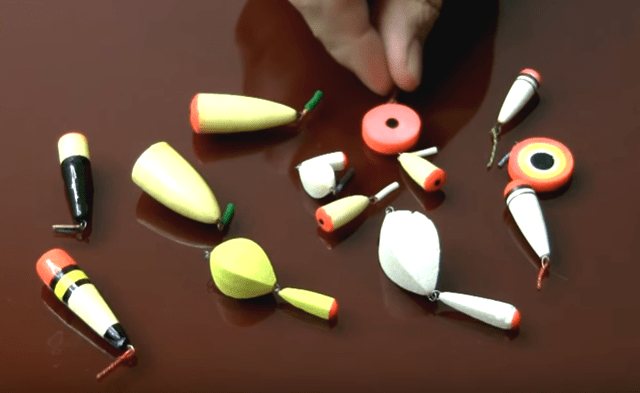
A two-part, articulated float for winter fishing will record the slightest touch of the bream to the bait. Such a float is clearly visible during any type of bite. Considering that the bream in most cases lays it out, it becomes difficult not to notice it when biting.
The choice of float color is an individual matter. The size and load capacity are selected according to the weight of the sinker, about 2-2.5 grams. The rigging of a winter fishing rod with a float should be prepared at home.
Fishing process
IN
When fishing for bream, keep silence, do not re-cast the tackle unnecessarily, avoid sharp and loud claps of the rod on the water - bream is a sensitive and very cautious fish, noise scares it away.
The bait should be thrown exactly into the place where the fishing will be carried out and wait a while so that the fish begin to gather around the turbidity formed in the water from the collapsing bait ball.
Bream bites are neat and sometimes unnoticeable - you should hook only after the float confidently moves to the side or, having emerged, lies on its side.
The hook should be sharp, but not sweeping - a strong jerk can tear the fish’s lips.
Fishing technique
The hooked bream very actively resists for some time, not allowing the angler to pull itself to the shore or boat. This does not last, as a rule, very long, and the fatal mistake during this short onslaught of fish is the angler’s stubborn desire to pull out the hooked bream as soon as possible.
Pulling it too quickly towards the shore can lead to the fact that the weak lips of the fish cannot stand it and the bream gets away. Usually, large fish are allowed to “walk” on the line for some time, without allowing them to go into the thickets of water lilies, coastal snags, or under the boat when fishing from it, and then, when the pressure of the fish subsides, they begin to smoothly pull the fish towards them. Usually, even the largest bream, having appeared on the surface and taking a breath of air, lies on its side and goes into the fisherman’s hands without resistance. Large bream are removed from the water using a landing net.
Fly rod
The most common fly rods used by anglers usually range from 7 to 9 meters. Although if you know the body of water where you are going to fish well enough, and properly and efficiently feed the fishing spot, then you can fish with 5 meter rods, it’s just as you like.
There is also such a thing as a headwind. Even if it is small, it can be problematic to fish with a fly rod longer than 7 meters.
Table of contents
— Fly rod ↓ — What you need for a fly rod ↓ — Where to look for bream ↓ — Bait for bream ↓ — Fly rod (Training film) ↓
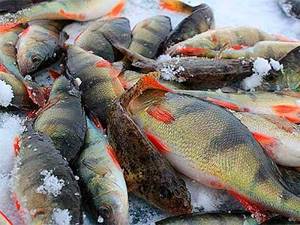
237 kilograms of fish from one hole!
The detained fishermen told the secret of a good bite. The fishery inspectors were surprised by the lack of prohibited equipment...
Read more
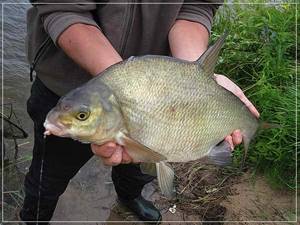
Almost every body of water is very rich and saturated with bream and not very large bream, so if you do everything correctly, the bite can be very active. All this means that you should choose a rod that is light enough, otherwise, with a heavy bite and long fishing, severe fatigue may occur. Usually a good and high-quality fly rod is made of high-quality carbon with a thin whip, which also serves as a shock absorber. A special plastic fastener is glued to the end of the whip to secure the loop of the equipment.
Fishing rod rig for bream
If you are planning to fish for bream, get a fly rod. This is an ideal option for fishing from the shore. The thinner the line, the better. This is explained by the fact that bream is a cautious fish. Especially if it is located close to the shore. A large specimen is supported by a fishing line whose diameter is 0.12 mm. From personal experience I know that such line can withstand 3-kilogram fish. For medium-weight bream and naturally small fish, a 0.1-mm fishing line will be sufficient. The recommended leash thickness is 0.08 mm.
An important point: as the thickness of the fishing line increases, the tackle becomes more sailable.
For novice fishermen, a fishing rod with light weights and small floats is of greater interest. In principle, it cannot be otherwise, since in our case, as we have already found out, thin lines are a priority. This fishing rod rig makes fishing in windy conditions accessible and even comfortable.
If you observe experienced fishermen, you will notice that when hunting for bream, they try to sink as much free line as possible.
Characteristics of the float for bream:
- extended keel,
- drop-shaped, elongated shape of the main body,
- minimal buoyancy of the thin tip, which does not interfere with its sinking.
These features are characteristic of a float called a “needle”.
The average number of weights located at approximately the same distance from each other is 7 pieces. The lowest one is released to the bottom.
How to determine the fact of a bite? This will be indicated by a float that floats up a few millimeters.
Don't neglect the color of the float tip. If you miss this moment, then in the future your eyes will quickly get tired of fishing, which will negatively affect the comfort of fishing and the size of the catch.
For example, a float with a fluorescent tip is almost invisible in clear weather and when there are water ripples. At the same time, this model shows good results in the shade and in the absence of waves.
According to the recommendations of experienced fishermen, it is better to have easily removable floats of different colors with you. In this case, your fishing will not be spoiled by any weather.
Sufficient rigidity of the fly rod is a prerequisite. In this case, the top should absorb well. Such quickly assembled tackle can easily support 1.5-kilogram fish. For heavier bream, tackle that bends along its entire length is required.
As for the number of fishing rods, it is advisable to have two or three tackles of different lengths in your arsenal, since, most likely, you will have to fish places distant from the shore at different distances. Please note that an excessively long and heavy fishing rod greatly tires the hands, especially for novice anglers whose hands are not accustomed to fishing.
About the attachments
Bream readily accept baits of animal origin: dung worms, bloodworms, maggots. When the water in the reservoir is well heated, boiled wheat, pearl barley, and corn are no less effective. By the way, large bream often bite on such plant baits. Fish can be caught using dough and semolina.
It is allowed to combine animal and plant attachments, for example, you can include live bloodworms in a manna mash containing honey. Believe me, it works. I was personally convinced of this. At the same time, my catch included large fish.
Sources:
https://34fish.ru/lovlya-leshcha/lovlya-leshcha-letom https://minnow.ru/fishing/poplavok/lovlya-leshha-letom/ https://vsegdanarybalke.ru/ryibalka/lovlya-leshha-letom / https://rybalka.guru/poleznye-stati/lovlja-leshha-vesnoj-na-poplavochnuju-udochku https://rybolovnye-sekrety.ru/lovlya-leshha-letom-na-udochku.html

